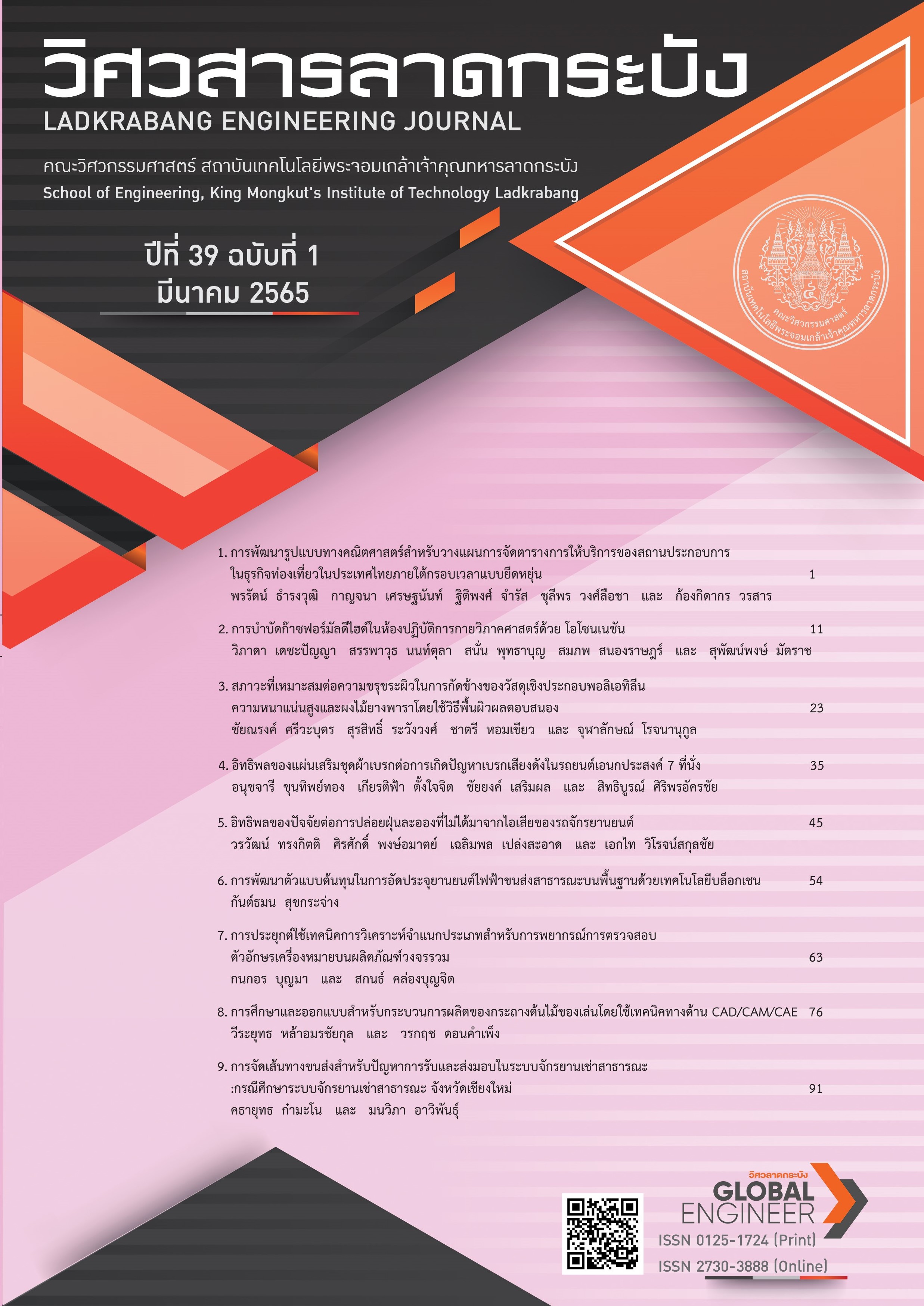A Mathematical Model for Service Scheduling Problem of Tourism Enterprises in Thailand with Soft Time Windows
Keywords:
Tourism supply chain management, Mathematical model, Mixed-integer linear programing, Service scheduling problemAbstract
This research seeks to address the service scheduling problem for tourism enterprises. Such planning requires consideration of several factors and stakeholders in the tourism industry are unable to manage resources efficiently. Therefore, this study aims to minimize the total time of service operations in the tourism business that cannot accommodate all of tourists within service hours by taking into account the daily time windows of tourists and tourism enterprises, sequence-dependent travel time, and tourism enterprises' restrictions. A novel mathematical model is proposed to solve the problem. The results of this study show that the development of a mathematical model is efficient in finding answers in terms of both solution quality and time complexity. Additionally, the practical solutions for the problem instances are within the acceptable computational time for the tourism industry.
References
N. Khamsing, K. Chindaprasert, R. Pitakaso, W. Sirirak, and C. Theeraviriya, “Modified ALNS algorithm for a processing application of family tourist route planning: a case study of Buriram in Thailand,” computation, vol. 9, no. 2, pp. 23, 2021, doi: 10.3390/computation9020023.
X. Wu, H. Guan, Y. Han, and J. Ma, “A tour route planning model for tourism experience utility maximization,” Advances in Mechanical Engineering, vol. 9, no. 10, 2017, doi: 10.1177/1687814017732309.
X. Zhou, M. Su, Z. Liu and D. Zhang, “Smart tour route planning algorithm based on clustering center motive iteration search,” IEEE Access, vol. 7, pp. 185607–185633, 2019, doi: 10.1109/ACCESS.2019.2960761.
X. Zhou, B. Sun, S. Li and S. Liu, “Tour route planning algorithm based on precise interested tourist sight data mining,” IEEE Access, vol. 8, pp. 153134–153168, 2020, doi: 10.1109/ACCESS.2020.3010420.
Q. Pan and X. Wang, “Independent travel recommendation algorithm based on analytical hierarchy process and simulated annealing for professional tourist,” Applied Intelligence, vol. 48, no. 6, pp. 1565–1581, 2017, doi: 10.1007/s10489-017-1014-0.
W. Sirirak and R. Pitakaso, “Marketplace location decision making and tourism route planning,” administrative sciences, vol.8, no. 4, pp. 72, 2018, doi: 10.3390/admsci8040072.
Z. K. A. Baizal, K. M. Lhaksmana, A. A. Rahmawati, M. Kirom, and Z. Mubarok, “Travel route scheduling based on user’s preferences using simulated annealing,” International Journal of Electrical and Computer Engineering, vol. 9, no. 2, pp. 1275–1287, 2019, doi: 10.11591/ijece.v9i2.pp1275-1287.
M. A. Uwaisy, Z. K. A. Baizal, and M. Y. Reditya, Recommendation of scheduling tourism routes using tabu search method (case study Bandung),” Procedia Computer Science, vol. 157, pp. 150–159, 2019, doi: 10.1016/j.procs.2019.08.152.
S. Boontaveeyuwat, “Optimizing the transportation of international container cargoes of Thailand under the appearances of two new deep seaports: Dawei and Pakbara ports,” Ladkrabang Engineering Journal, vol. 33, no. 2, pp. 104–110, 2016.
K. Sathapornprasath and P. Praneetpclkrang, “Mathematical model for paddy drying by jet spouted bed dryer,” Ladkrabang Engineering Journal, vol. 34, no. 4, pp. 22–29, 2017.
Downloads
Published
How to Cite
Issue
Section
License
Copyright (c) 2022 Faculty of Engineering, King Mongkut’s Institute of Technology Ladkrabang

This work is licensed under a Creative Commons Attribution-NonCommercial-NoDerivatives 4.0 International License.
The published articles are copyrighted by the School of Engineering, King Mongkut's Institute of Technology Ladkrabang.
The statements contained in each article in this academic journal are the personal opinions of each author and are not related to King Mongkut's Institute of Technology Ladkrabang and other faculty members in the institute.
Responsibility for all elements of each article belongs to each author; If there are any mistakes, each author is solely responsible for his own articles.






